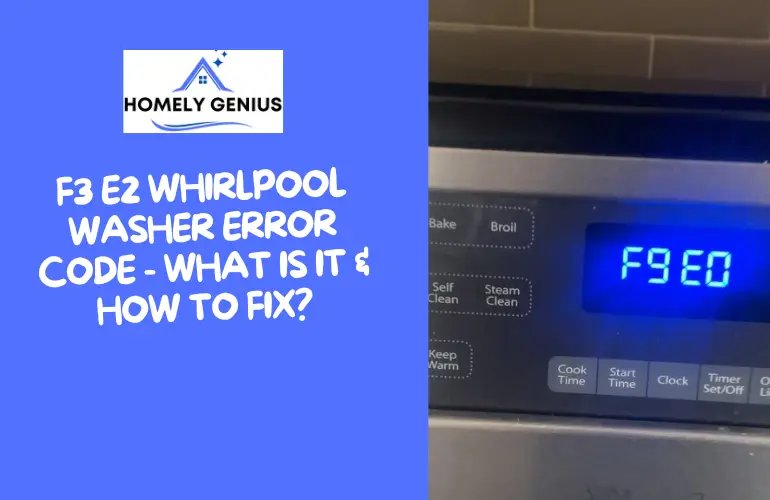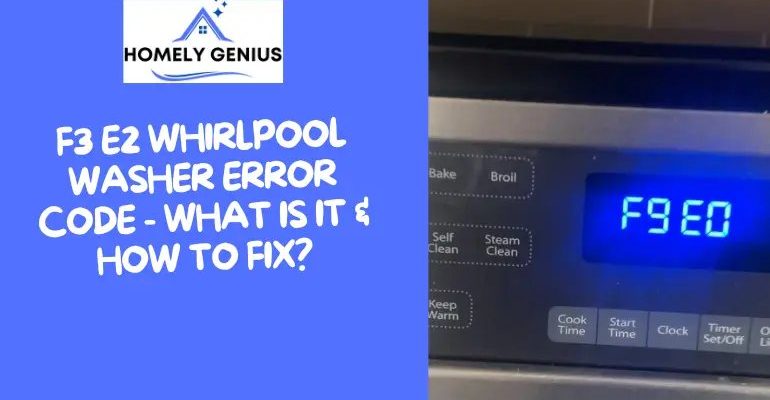
But what exactly does this Error E2 mean, and why should we care about it? Essentially, Error E2 is telling you that the machine is struggling to drain properly. Imagine trying to pour water out of a bottle with the cap on—nothing comes out, right? In the world of washing machines, this usually points to a problem in the drainage system, which can lead to a whole host of other issues if not addressed in time.
Understanding the Basics of Error E2
Error codes are like the washing machine’s language, giving you hints about what might be wrong. In the case of Error E2, the machine is saying, “Help! I can’t empty the water!” This error often arises because of a blockage or malfunction in the machine’s pump or drain hose. Think of it as trying to drink from a straw with a piece of tissue stuck in it—it just doesn’t work well.
The primary job of the pump and hoses is to get rid of the water after a cycle. If these components fail, the machine can’t proceed, leading to Error E2. The causes can be as simple as a sock stuck in the drainage system or more complicated like a faulty pump. Failing to resolve this issue can lead to more than just a pile of wet clothes.
Ignoring Error E2 could mean an eventual breakdown. The water left in the machine might cause mold or mildew to form, which isn’t just an inconvenience but can escalate into a health hazard. Additionally, standing water can lead to unpleasant odors and become a breeding ground for bacteria. That’s something nobody wants in their laundry room!
The Consequences of Ignoring Error E2
If you choose to ignore Error E2, you’re essentially setting yourself up for a cascade of complications. Imagine leaving a leaky tap unattended; over time, the small drip can lead to significant water damage. Similarly, a persistent Error E2 can worsen, eventually causing permanent damage to the washing machine’s internal components.
Over time, the consistent presence of water can lead to rusting parts and degraded seals. This kind of deterioration is akin to not taking care of a car—skip the oil changes, and you’ll soon face engine problems. In the washing machine world, neglecting these signs can lead to costlier repairs or even the need for a new machine altogether.
Moreover, if the machine doesn’t drain properly, it will constantly struggle during its operation. This inefficiency can increase energy consumption, just like driving a car with deflated tires. You might not notice it at first, but your electricity bills will creep up over time. And let’s not forget the environmental impact—constant malfunctions mean more energy and water use, which isn’t exactly planet-friendly.
Steps to Fix Error E2
Now, you might be wondering, “What can I do about this error?” The great news is, tackling Error E2 isn’t rocket science. The first step is to ensure that the drainage hose isn’t kinked or clogged. Imagine tying a knot in a garden hose—the water flow stops. Similarly, any blockages in the washing machine hose can lead to drainage issues.
Another step is to inspect the filter. The washing machine’s filter is like a colander for pasta, catching any foreign debris. If it’s clogged, water can’t pass through. By cleaning or replacing the filter, you can often resolve drainage issues and save yourself from the woes of Error E2.
If the problem persists after these checks, it might be time to call in a professional. Just like you wouldn’t tackle a complex plumbing issue alone, sometimes it’s best to get expert help with your machine. A technician can diagnose and resolve pump malfunctions or deeper electrical issues.
Preventing Future Errors
Prevention, as the saying goes, is better than cure. To prevent Error E2 from haunting you again, regular maintenance is key. Consider it like tuning up a car—routine checks and cleaning can extend the life of your washing machine by preventing clogs and ensuring smooth operation.
Regularly inspect the drainage hose and filters to ensure they’re clear. Keep an eye out for strange noises or warning signs during washes, much like you would listen to your car for any unusual sounds. These proactive steps can save you time and money down the line.
Lastly, remember that following the manufacturer’s guidelines on washing machine use and maintenance can make a big difference. It’s a bit like reading the owner’s manual for your car—it provides valuable insights on getting the most out of your machine while avoiding common pitfalls.
By understanding and addressing Error E2 promptly, you can enjoy peace of mind and a smoothly-running washing machine. After all, keeping this household appliance in top shape can make laundry day a breeze instead of a chore.
